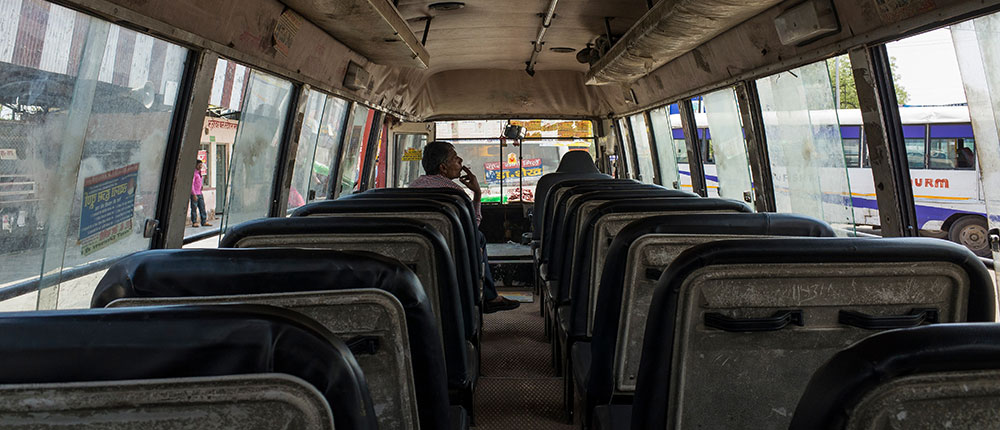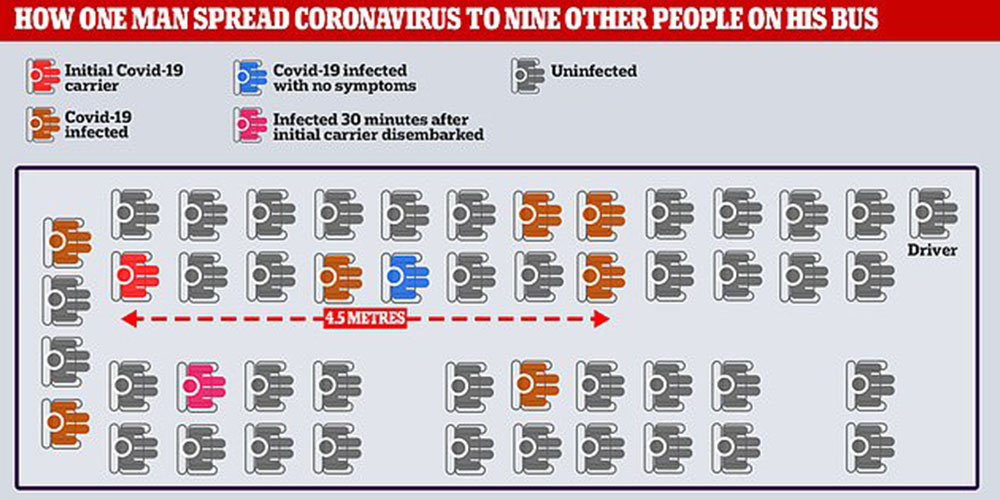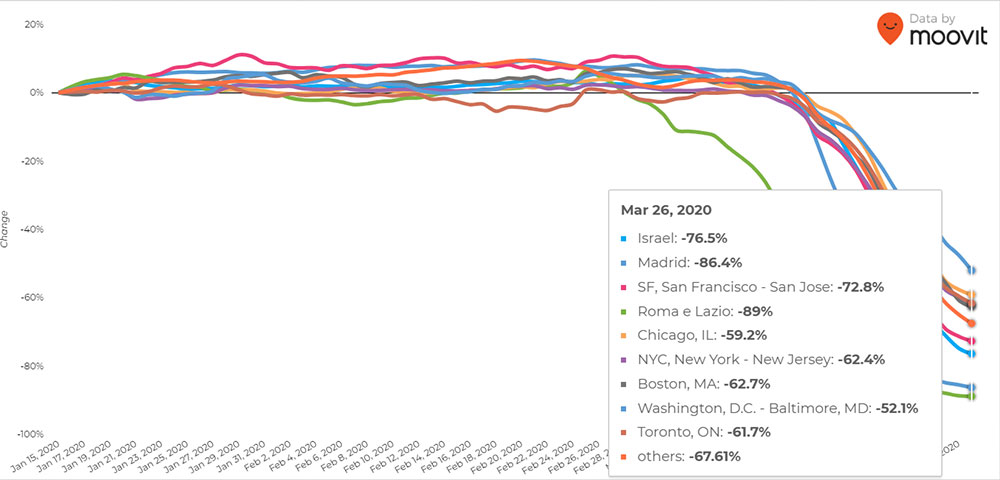Transportation sector has been one of the primary victims of COVID-19. From rickshaw pullers to airlines, all have been affected economically by the pandemic. India's overall energy demand fell by 11% in March 20201. Due to lockdown in many countries, the demand for passenger transport has been adversely hit. The freight segment has had a mixed short-term effect in terms of transportation demand. There is a surge in demand for truck drivers in transportation of essential goods. For instance, there is 40% to 60% increase of product being moved into grocery stores and warehouses in US since COVID spread started2. However, the supply chain disruption and slowdown caused by COVID is expected to pull down freight demand in the medium-term. Urban freight segments in India have also had a mixed short-term effect in terms of transportation demand. Since February, the online food orders have dropped by 20% whereas online grocery orders are overflowing3. It is to yet to be seen whether these acquired habits of online grocery shopping will sustain after the pandemic passes.

Even though the fall in passenger transport demand is pushed by social distancing restrictions, COVID-19 may have a long-term effect on people's travel behaviour. The following figure shows the image from a retracted epidemiological study from Wuhan. The researchers show through CCTV evidence on how one individual infected nine others in a public bus on January 22nd.

Citing higher risk of community spread of the virus in buses, many city/state/national governments issued guidelines for public transport operators. These included various instructions from dispensing tickets to disinfecting seats4,5. With increasing restrictions imposed by governments, both public transport services and their demand have been badly hit. Moovit released a report showing the drastic fall in public transport usage in many cities6.

Even after the situation normalises, the perception of risk associated with crowded areas could lead to shift in preferences towards personal travel modes. That is, people may avoid using public transport modes to avoid crowds. People may also avoid shared mobility modes like autorickshaws, micro-transit vans, e-rickshaws etc. The drivers employed in app-based taxi services are economically suffering in the short term due to the COVID lockdown. However, it cannot be said if these modes may face long term economic effects in terms of reduced travel demand.
Many players in the transportation sector are adapting to these changing demands. For instance, American Airlines and some of its peers have converted many of the passenger flights to carry goods7. These idle airplanes have been assigned to carry e-commerce, medical supplies and office cargo. In China, autonomous vehicles were piloted to provide 'touchless' service to provide delivery issues while reducing the risk of spread of the disease8. Indian Railways have simultaneously cancelled passenger trains and ramped up parcel services and other freight services for essential commodities9. In Bengaluru, Three Wheels United (TWU), a city-based social enterprise, launched a program for auto drivers to deliver medicines, groceries and other essential goods to the residents. Unfortunately, this program hit a roadblock regarding permissions from the authorities to operate during the 21-day lockdown in India.
During the lockdown, only essential people and commodities are permitted by the authorities. The list of essential people and commodities must be continuously revised to minimise the adverse impact on people's lives and the spread of the pandemic. Considering this lockdown as a large travel demand experiment, organisations have much to gain from optimising transportation of employees in the future, in terms of productivity and costs. Also, during this period, due to no transport modes, people have been exposed to walking in roads with neither pollution nor congestion. Hence authorities may expect better results in future policies aimed at nudging short trips into pedestrianised modes. However, as the transportation sector employs millions, in the long run, it is necessary to understand the pandemic's impact on consumer preference and the subsequent transportation demand for passengers and goods.
Footnotes:
[1] https://economictimes.indiatimes.com/industry/energy/oil-gas/indias-fuel-demand-drops-11-in-march-as-coronavirus-hits-aviation-transport/articleshow/74711994.cms?from=mdr
[2] https://wwmt.com/news/local/covid-19-puts-truck-drivers-in-high-demand-for-transport-of-crucial-goods
[3] https://www.dealstreetasia.com/stories/zomato-groceries-covid-181071/
[4] https://www.transformative-mobility.org/news/the-covid-19-outbreak-and-implications-to-public-transport-some-observations
[5] https://www.uitp.org/sites/default/files/cck-focus-papers-files/Corona%20Virus_EN.pdf
[6] https://moovitapp.com/insights/en/Moovit_Insights_Public_Transit_Index-countries
[7] https://www.pymnts.com/coronavirus/2020/covid-19-airlines-shift-from-passengers-to-cargo/
[8] https://www.weforum.org/agenda/2020/03/china-covid-19-coronavirus-mobility-solutions/
[9] https://www.livemint.com/news/india/covid-19-railways-to-turn-coaches-into-isolation-centre-for-patients-11585400513307.html
